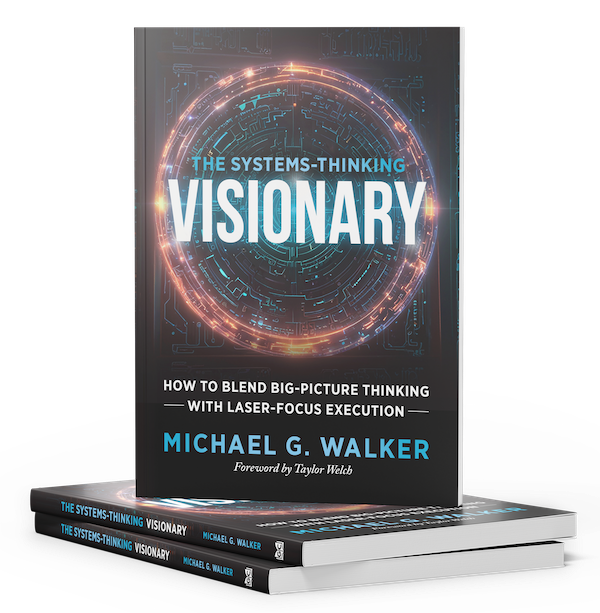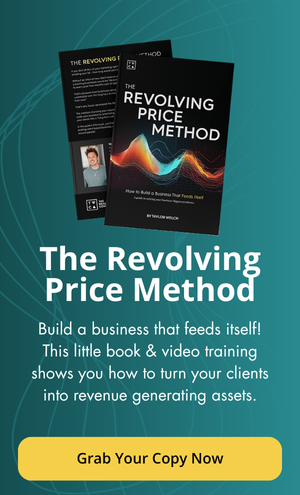Job Replacements
Want to hear a secret? A majority of entrepreneurs (especially in the online space) own businesses that aren’t actual businesses.
They’re job replacements.
Fancy-looking cages that let you pick your own hours… as long as you’re okay with working all of them. The good news? There’s a way out. It’s not sexy or anything, but it’s brutally effective and has a history of working pretty well for creating scalable businesses that don’t turn around and murder their owners.
It’s called systemization. It’s the differentiating factor between operators and architects. Those who stay free to build, and those who get mired in endless execution.
There’s a reason we see operators burning out while architects build companies they can leave (sometimes for weeks) without their business turning into the Great Chicago Fire of 1871.
They install structure. No, not bureaucracy. Intelligent infrastructure. The kind that replaces chaos with rhythm and removes the founder from the day-to-day without removing the soul of the business in the process.
So, let’s break this down. Four systems. Four shifts. All actionable, all field-tested.
Stop Being “The Brain” on Every Call
You don’t need to make a lot of the decisions in your business. Not that those decisions don’t need to BE made. YOU just don’t need to be the one to make them.
We’re not insinuating that you abdicate your responsibility as the founder or the CEO. Just that you gain clarity on what actually needs your attention, versus what pretty much anyone else in the business could handle on your behalf.
Let’s make this practical.
- Start by identifying 5–10 common decisions your team brings to you
- Build filters around them and create a simple ranking system that determines whether or not this impacts both YOUR targets as the owner, and the greater needs of the business as a whole
- If a decision comes across your desk that does not rank high enough, push it back to the team and force them to exercise autonomy
These filters become your business’s new guardrails, and once your team knows how to use them, your Slack becomes quieter and your calendar gets cleaner.
This is how you eliminate decision fatigue. Not by being available, but by being unnecessary.
The operators answer the questions. The architect devotes their time to only the most critical choices.

Systematize Your Value with a Codex Rather Than Curriculum
Your product delivery should not require your constant presence to run smoothly. If it does, you basically work a shift at a job. You’re not a business owner.
Codify what makes your fulfillment exceptional. Capture the thinking behind your decisions, the “why” behind your frameworks, the nuance behind your feedback. Record it. Document it. Structure it into a deliverable that someone else—someone you’ve trained—can drive.
This is the foundation of what we call the Codex Model: invisible genius modeled through visible systems. Not just for your team, but for your clients too. It’s how high-value IP gets scaled without sacrificing results.
You can see how this thinking intersects with client retention in Client Culture 101.
Building it so well they never want to leave starts by making sure they’re not addicted to you, but to the system.
Engineer Your Marketing Rhythm
A lot of founders live in reactive mode. Scrambling to launch, post, and pitch with no forward visibility. If you’re still asking, “What should we sell this month?” in the second week of the month, you’re operating. Too reactive.
Architects don’t guess about this stuff. They meticulously plan, follow through, and execute.
Block off one day every 90 days to plan your next campaign cycle.
Pick the offer you’ll be promoting, map the CTAs, build the value content. Then, assign the production pieces, trust your TEAM, forget about it and go build something else.
This is how you get marketing that builds momentum instead of migraines. We’d argue that this kind of rhythm isn’t optional if you want to scale. It’s essential.
Just take a look at the macro trends shaping the industry in The State of Consulting. Spoiler: structure wins.
Weekly Operational Reviews: Replace Chaos with Cadence
You don’t need more dashboards to give you high level views on every single aspect of the business. They’re great, don’t misunderstand us. BUT, you need operational systems that run without you.
Practical piece of advice for you… Install a weekly ops review. Thirty minutes, max. Each team lead reports on their area using red/yellow/green status markers. No storytelling. No soapboxes. No blame shifting or over-explaining failures with multiple layers of attribution.
If something’s red, the team proposes a solution. If it’s green, you celebrate and move on. You want an engineered machine, not a barely held together mess.
This is where the shift from operator to architect becomes permanent. Out of the weeds and into the watchtower, inspecting the terrain.

You Can Still CARE
You can still care about the things in the business that you’ve always cared about. The point is not to try and magically become another person. The transition from operator to architect doesn’t require a personality transplant. What it does require is intention, systems, and a refusal to build something that only works when you’re watching.
We’ve seen it over and over: the founders who step back the furthest are the ones who thought forward the most.
They’re building empires. Quietly. Systematically. Architecturally.

Thinking in Systems = SCALABILITY
If you want to build systems that strategically work you OUT of being the most important person inside of your own business, you need to pick up our latest book, “The Systems Thinking Visionary.” Inside we outline practical ways to keep the momentum of your most potent ideas alive, well, and thriving! Available in multiple formats at the link below.

